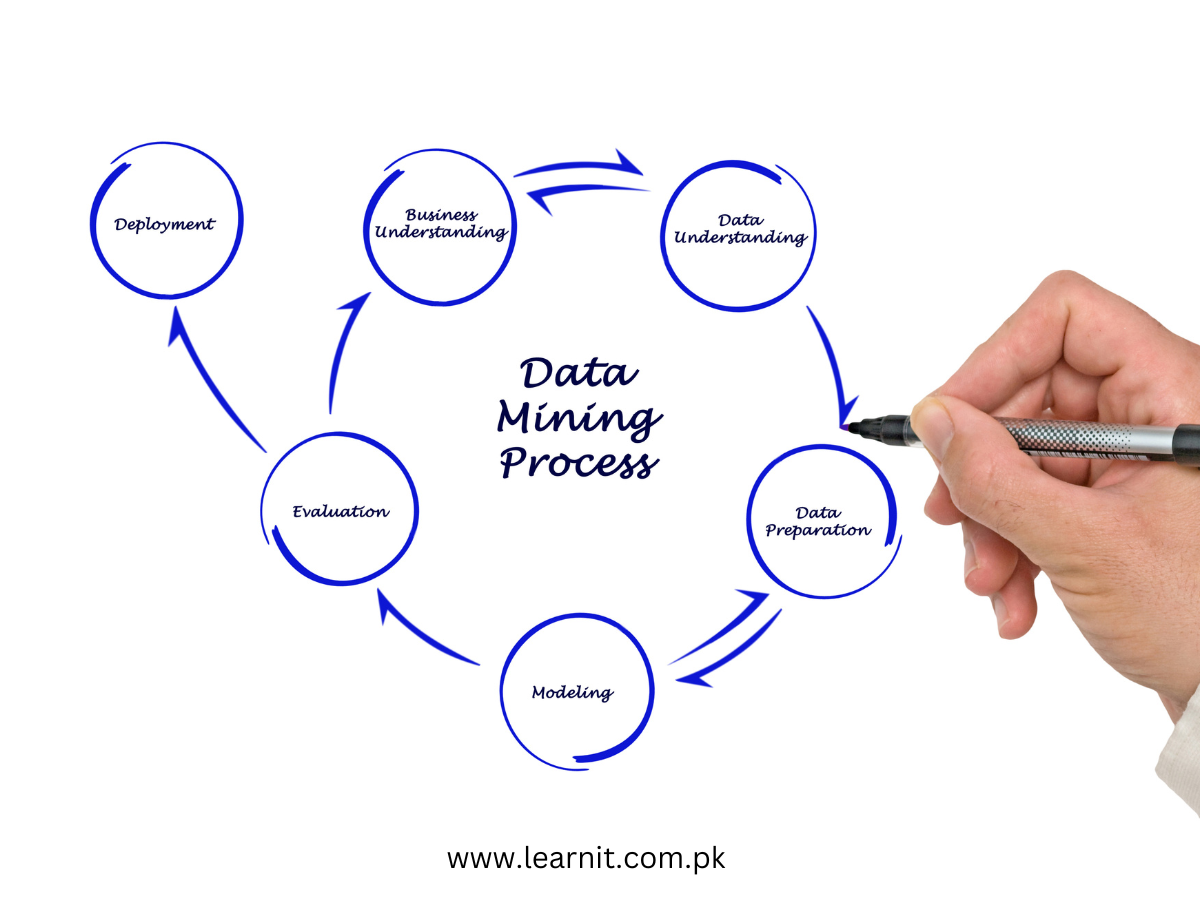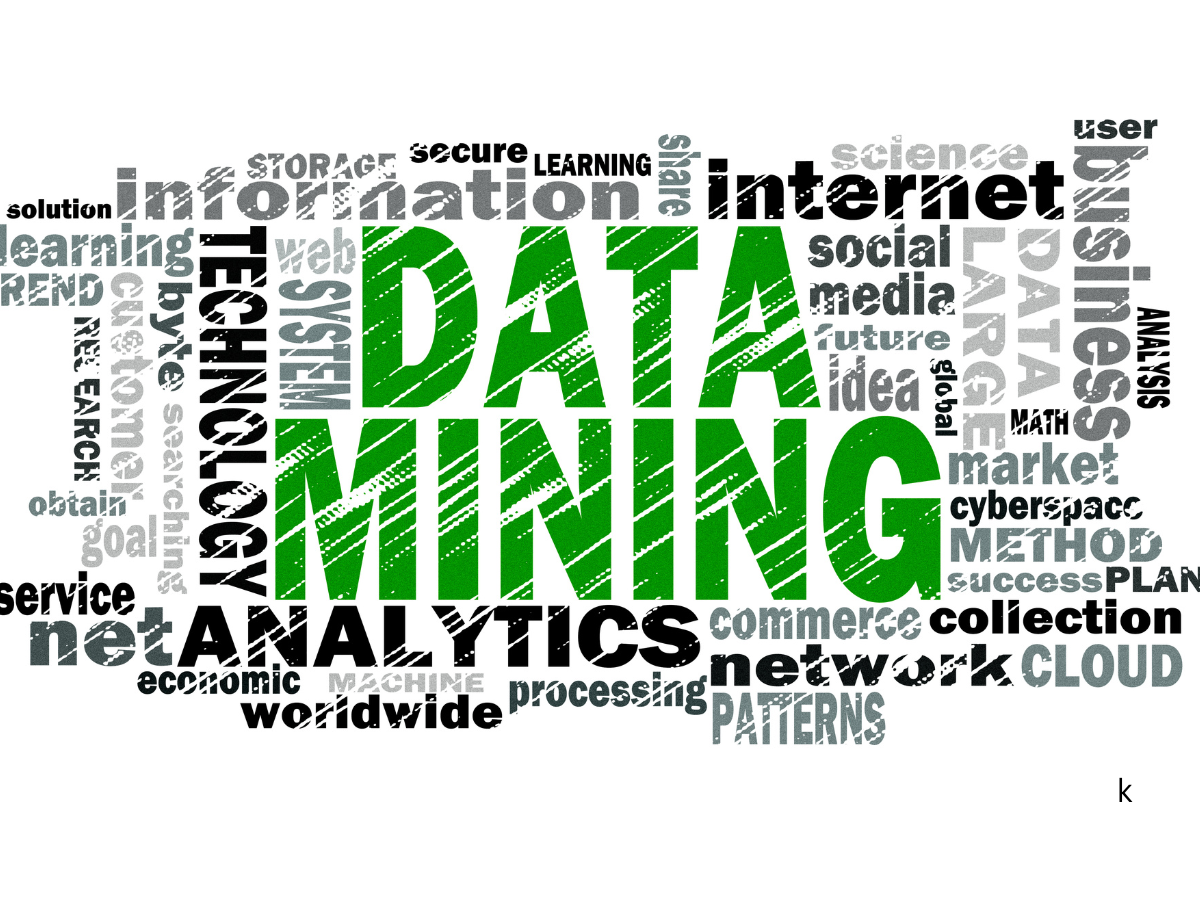Data mining | 30 best mining patterns in 2023

Data mining involves the extraction of meaningful patterns and insights from large datasets. These patterns can vary widely and are essential for businesses and researchers to make informed decisions, identify trends, and discover hidden relationships within the data. From association rules that reveal purchasing habits to time series patterns tracking trends over time, data mining uncovers a multitude of valuable patterns that contribute to enhancing processes and driving success.
Association Rules:
- Introduction: Association rules uncover relationships between items that frequently co-occur in transactions or datasets.
- Real-life Example: A retail store uses association rules to identify that customers who purchase baby diapers are likely to buy baby wipes as well. This insight enables the store to place these products closer together, leading to increased sales of both items.

Sequential Patterns:
- Introduction: Sequential patterns reveal temporal associations between events or transactions.
- Real-life Example: An online streaming platform analyzes sequential patterns to identify binge-watching behavior. Based on users’ viewing habits, the platform recommends the next episode of a TV series, enhancing user engagement and retention.
Clustering Patterns:
- Introduction: Clustering patterns group data into clusters based on similarities, aiding in the identification of distinct data segments.
- Real-life Example: Market researchers analyze customer data to segment consumers into groups with similar purchasing behaviors. These segments help design targeted marketing strategies for each group, resulting in more effective campaigns.
Classification Rules:
- Introduction: Classification rules predict categorical labels for data instances based on existing patterns.
- Real-life Example: Credit card companies use classification rules to detect fraudulent transactions. By analyzing historical data of fraudulent transactions, the system can identify and block suspicious activities in real-time, ensuring secure transactions for customers.
Anomaly Detection Patterns:
- Introduction: Anomaly detection patterns identify outliers or unusual data instances that deviate significantly from the norm.
- Real-life Example: A cybersecurity system analyzes network traffic to detect unusual activities that might indicate a potential cyber attack. By identifying anomalies, the system can promptly respond to security threats and protect sensitive data.
Regression Patterns:
- Introduction: Regression patterns establish relationships between variables to predict numeric values.
- Real-life Example: A real estate agency uses regression patterns to predict housing prices based on factors like location, square footage, and number of bedrooms. This information helps buyers and sellers make informed decisions in the property market.
Time Series Patterns:
- Introduction: Time series patterns analyze data over time to identify trends, seasonality, and patterns.
- Real-life Example: Meteorologists analyze time series data from weather stations to forecast weather conditions. This information is crucial for disaster preparedness and agricultural planning.
Text Mining Patterns:
- Introduction: Text mining extracts insights from unstructured text data, such as sentiment analysis or topic modeling.
- Real-life Example: Social media platforms use text mining to perform sentiment analysis on user comments and posts. This analysis provides valuable feedback on products or services and helps businesses understand customer sentiments.
Image Mining Patterns:
- Introduction: Image mining identifies patterns and features in image data for tasks like object recognition.
- Real-life Example: Medical professionals use image mining to analyze medical images such as X-rays and MRIs to identify abnormalities and make accurate diagnoses.
Social Network Analysis Patterns:
- Introduction: Social network analysis patterns examine relationships and influence in social networks.
- Real-life Example: Social media platforms use social network analysis to identify influencers and measure the impact of social media campaigns.
Frequent Item sets:
- Introduction: Frequent itemsets identify sets of items that frequently co-occur together in transactions or datasets.
- Real-life Example: Market basket analysis in supermarkets identifies frequently purchased item combinations, enabling stores to strategically place related products near each other and increase sales.
Outlier Detection Patterns:
- Introduction: Outlier detection patterns identify data instances that deviate significantly from the norm.
- Real-life Example: In manufacturing, outlier detection is used to identify defective products on the production line, ensuring only high-quality products are delivered to customers.
Collaborative Filtering:
- Introduction: Collaborative filtering recommends items to users based on the preferences of similar users.
- Real-life Example: Online retailers use collaborative filtering to recommend products based on the browsing and purchasing history of customers with similar preferences.
Link Analysis Patterns:
- Introduction: Link analysis patterns analyze relationships between entities in a network.
- Real-life Example: Search engines use link analysis to determine the relevance and popularity of web pages, influencing their rankings in search results.
Decision Trees:
- Introduction: Decision trees represent decisions and their possible consequences in a tree-like structure.
- Real-life Example: In healthcare, decision trees assist doctors in diagnosing diseases based on patient symptoms and medical history, helping to determine appropriate treatment plans.
Apriori Patterns:
- Introduction: Apriori is a specific algorithm for mining frequent itemsets in transactional data.
- Real-life Example: Retailers use the Apriori algorithm to identify frequently purchased item combinations, allowing them to create attractive bundle offers and promotions.
Sentiment Analysis:
- Introduction: Sentiment analysis determines the sentiment or emotion expressed in text data, such as positive or negative sentiment.
- Real-life Example: Market researchers use sentiment analysis on customer feedback and product reviews to gauge customer satisfaction and identify areas for improvement.
Market Basket Analysis:
- Introduction: Market basket analysis examines customer purchase behavior to identify related product bundles.
- Real-life Example: An e-commerce platform uses market basket analysis to suggest product bundles like “frequently bought together,” increasing the average order value.
Spatial Patterns:
- Introduction: Spatial patterns discover patterns based on geographical data, such as location-based trends.
- Real-life Example: Urban planners use spatial patterns to analyze traffic data and design efficient transportation networks in cities.
Collinearity Patterns:
- Introduction: Collinearity patterns identify highly correlated variables in data.
- Real-life Example: In finance, collinearity patterns help identify highly correlated assets in a portfolio, allowing investors to diversify and mitigate risk.
N-Grams:
- Introduction: N-Grams identify sequences of n items occurring together in text or speech data.
- Real-life Example: In natural language processing, N-Grams are used to predict the next word in a sentence or analyze language patterns.
Subgroup Discovery Patterns:
- Introduction: Subgroup discovery patterns discover interesting patterns in specific subsets of data.
- Real-life Example: In clinical trials, subgroup discovery helps identify patient groups that respond better to specific treatments, leading to more personalized medical care.
Reinforcement Learning Patterns:
- Introduction: Reinforcement learning patterns discover patterns that reinforce positive outcomes in dynamic environments.
- Real-life Example: In robotics, reinforcement learning helps develop autonomous systems that can adapt and learn from their environment to achieve specific goals.
Graph Mining Patterns:
- Introduction: Graph mining extracts patterns and relationships in graph-structured data.
- Real-life Example: Social networks analyze graph mining patterns to identify influential users who have a significant impact on the network’s dynamics.
Decision Rules:
- Introduction: Decision rules identify rules that guide decision-making based on data characteristics.
- Real-life Example: Banks use decision rules to assess credit risk based on factors such as income, credit history, and debt-to-income ratio.
Natural Language Processing (NLP) Patterns:
- Introduction: NLP patterns analyze and process human language to extract insights.
- Real-life Example: Virtual assistants like Siri and Alexa use NLP patterns to understand and respond to user queries, enabling more natural interactions.
Graphical Patterns:
- Introduction: Graphical patterns visualize patterns and relationships in data using graphical techniques.
- Real-life Example: Data visualization tools use graphical patterns to represent complex data in a visually appealing and easy-to-understand format.
Statistical Patterns:
- Introduction: Statistical patterns identify statistical distributions and trends in data.
- Real-life Example: Demographers use statistical patterns to analyze population data and predict future population trends.
Rule-Based Patterns:
- Introduction: Rule-based patterns discover rules that guide decision-making based on data characteristics.
- Real-life Example: In customer service, rule-based patterns help automate responses to common queries, improving response times and customer satisfaction.
Collaborative Patterns:
- Introduction: Collaborative patterns uncover patterns in collaborative filtering and recommendation systems.
- Real-life Example: Online marketplaces use collaborative patterns to recommend products to customers based on the purchasing behavior of other users with similar preferences.
These examples demonstrate the wide range of patterns that data mining can unearth, revolutionizing decision-making processes in various domains and industries. Data mining continues to empower businesses and researchers with actionable insights that drive success and innovation.





